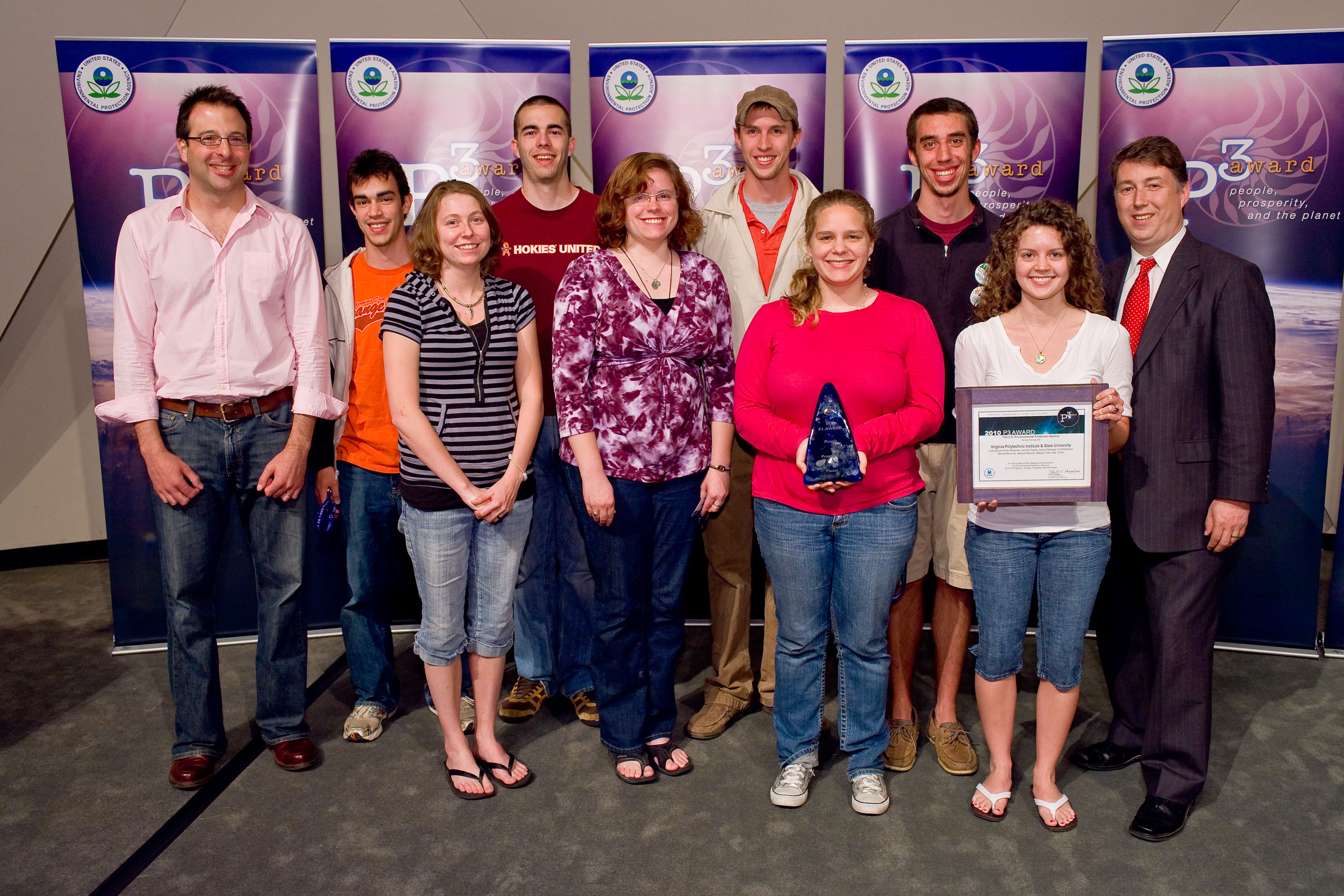Undergraduate student team wins P3 Award in Environmental Protection Agency's sustainable design competition

A team of undergraduate students from Virginia Tech's Department of Biological Systems Engineering in the College of Agriculture and Life Sciences and the College of Engineering was one of 14 teams to win an Environmental Protection Agency (EPA) P3 Award at the 6th Annual National Sustainable Design Expo.
Winners of the EPA’s People, Prosperity, and the Planet (P3) awards developed sustainable projects and ideas that protect the environment, encourage economic growth, and use natural resources more efficiently.
Virginia Tech’s award-winning design was a combined effort of two senior design teams’ projects. During the two-course senior design sequence, students gain experience working in a team environment, and then apply their course work to real-world problems faced by the private sector.
The two teams collaborated to develop a design for a combined riparian zone with a stream denitrifying biofilm for nitrate reduction in aquatic ecosystems. The design includes a buffer zone of plants, shrubs, and trees along the stream that will help to filter the water and remove nitrates before they enter the stream. The bioreactor provides an environment within the stream for the denitrifying bacteria to grow, which helps to remove nitrates directly from the stream.
The team was awarded $75,000, which will be used to further refine the design and to implement a pilot-scale model at Stroubles Creek in Blacksburg.
Virginia Tech’s P3 Team was composed of seniors majoring in biological systems engineering. Team members are:
- Koren Breighner of Roanoke, Va.;
- Jennifer Downs of Richmond, Va.;
- Joshua Flickinger of Westmoreland, Va.;
- Scott Kesecker of Mount Sidney, Va.;
- Michael McAnulty of Blacksburg, Va.;
- Jessica Palazzolo of Luray, Va.;
- Melissa Thies of Hampton, Va.; and
- Alex Tucker of Pennington Gap, Va.
Justin Barone, associate professor of biological systems engineering, served as the team’s faculty advisor.
The competition consisted of two phases. In the fall, teams submitted proposals for a Phase I grant of $10,000 to develop its design project. The students worked during the academic year on the research and subsequent proposals. In the spring, they submitted their project reports, which included a summary of their Phase I activities and their Phase II proposals.
Teams brought their designs, prototypes, and other exhibition materials to the National Mall in Washington, D.C., for the National Sustainable Design Expo on April 23-25. During the expo, teams were evaluated by a series of judges. Scores from the project reports as well as the presentations on the Mall were combined into a final overall score for each P3 team.
Based on these scores, the American Association for the Advancement of Science made recommendations to the EPA about which teams should receive P3 Awards and the opportunity for Phase II funding.




